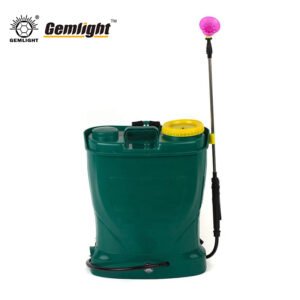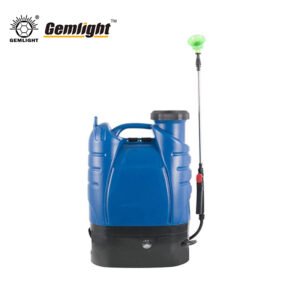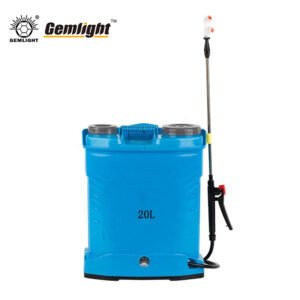What Is the Strongest Steel for a Machete?
When it comes to choosing the right machete, the strength of the steel used in its blade is a key factor that determines durability, sharpness retention, and overall performance. Machetes are used for various tasks, including agricultural work, survival situations, and even self-defense. Thus, selecting the best steel for a machete is crucial to ensure efficiency, longevity, and ease of maintenance.
Understanding Machete Steel Types
Machete blades are commonly made from three types of steel: carbon steel, stainless steel, and high-carbon stainless steel. Each of these materials has its strengths and weaknesses, and their suitability depends on how the machete will be used.
1. Carbon Steel: The Traditional Powerhouse
Carbon steel has long been the preferred choice for machete manufacturers due to its exceptional hardness and durability. It is an alloy of iron and carbon, and the increased carbon content gives the blade extra strength, allowing it to hold a sharp edge for extended periods.
Advantages of Carbon Steel:
- Superior Hardness – The high carbon content makes the blade incredibly tough and ideal for heavy-duty cutting tasks.
- Long-Lasting Edge Retention – Once sharpened, a carbon steel machete maintains its edge for a prolonged time, reducing the need for frequent sharpening.
- Excellent for Chopping and Cutting – Carbon steel machetes excel at cutting thick vegetation, wood, and even small trees.
Disadvantages of Carbon Steel:
- Prone to Rust – Carbon steel is highly susceptible to corrosion and rust if not properly maintained. It requires regular oiling and proper storage.
- Brittle Nature – While hard, carbon steel can be brittle and may chip or break under extreme impact.
- Difficult to Sharpen – Due to its hardness, resharpening a carbon steel blade requires effort and the right tools.
Carbon steel is best for individuals who need a high-performance machete for agricultural work, survival situations, or clearing thick vegetation.
2. Stainless Steel: Rust-Resistant and Easy to Maintain
Stainless steel is another common material used in machetes, known for its rust resistance and lower maintenance needs. It is an alloy of iron, carbon, chromium, and nickel, with the latter two elements providing excellent corrosion resistance.
Advantages of Stainless Steel:
- Resistant to Corrosion – Unlike carbon steel, stainless steel does not rust easily, making it ideal for humid or wet environments.
- Easier to Maintain – Requires minimal upkeep, and occasional sharpening keeps it in good condition.
- Less Brittle – Stainless steel has higher flexibility than carbon steel, making it less prone to chipping.
Disadvantages of Stainless Steel:
- Lower Hardness – Stainless steel is softer compared to carbon steel, meaning the blade can dull more quickly with heavy use.
- Less Edge Retention – It requires more frequent sharpening due to its softer nature.
- Not as Strong for Heavy Chopping – While effective, it is not the best option for extremely demanding cutting tasks.
Stainless steel machetes are best suited for casual users, light gardening work, and individuals who prefer a low-maintenance tool.
3. High-Carbon Stainless Steel: The Best of Both Worlds
For those seeking the strongest and most versatile steel for a machete, high-carbon stainless steel is the answer. It combines the hardness and edge retention of carbon steel with the rust-resistant properties of stainless steel, making it the ultimate material for a durable and high-performance machete.
Advantages of High-Carbon Stainless Steel:
- Balanced Hardness and Flexibility – The combination of materials ensures a strong yet slightly flexible blade, reducing the risk of chipping or breaking.
- Superior Edge Retention – High-carbon stainless steel stays sharp for extended periods, requiring less frequent sharpening.
- Corrosion Resistance – Unlike pure carbon steel, it resists rust while maintaining exceptional durability.
- Ideal for Various Uses – Suitable for agriculture, survival, and outdoor adventures, making it the most versatile steel option.
Disadvantages of High-Carbon Stainless Steel:
- More Expensive – The enhanced durability and quality come at a higher price.
- Heat Sensitivity – Excessive heat can affect its structure, making it brittle if not properly treated.
High-carbon stainless steel is the best choice for professional users, serious survivalists, and those who demand top-tier performance from their machetes.
Which Steel Is the Strongest?
If we define “strength” as a combination of hardness, edge retention, durability, and resistance to wear and tear, high-carbon stainless steel emerges as the strongest steel for a machete. It provides the perfect balance of all essential properties, making it ideal for demanding tasks such as jungle clearing, survival, and agricultural work.
However, if sheer hardness and cutting power are the only priorities, carbon steel is the winner. It delivers unmatched toughness and edge retention, but at the cost of requiring extra maintenance.
For those who prioritize rust resistance and easy upkeep, stainless steel is a more practical choice, though it lacks the cutting efficiency of carbon-based alternatives.
How to Maintain a Strong Machete Blade
Regardless of the type of steel, proper maintenance is key to ensuring that your machete remains strong and functional for years. Here are some tips to keep your blade in optimal condition:
- Regular Cleaning – After each use, wipe the blade clean to remove moisture, sap, and dirt.
- Oil the Blade – If you own a carbon steel or high-carbon stainless steel machete, apply a thin layer of oil to prevent rust.
- Sharpen When Necessary – Use a sharpening stone or file to maintain a razor-sharp edge.
- Store Properly – Keep the machete in a dry place, preferably with a sheath to protect the blade.
- Avoid Excessive Heat – Do not expose your machete to high temperatures, as this can alter the blade’s hardness and integrity.
Conclusion: Choosing the Best Machete Steel for You
The strongest steel for a machete depends on your specific needs and environment.
- If you need maximum hardness and cutting power, carbon steel is the way to go.
- If you prefer rust resistance and easy maintenance, stainless steel is the best option.
- If you want the best of both worlds, high-carbon stainless steel is the ultimate choice.
Regardless of your selection, investing in a high-quality machete with the right steel composition ensures that you have a reliable, durable, and efficient tool for years to come.
Now that you understand the different types of steel, it’s time to choose the best machete for your needs. Browse our collection of premium carbon steel, stainless steel, and high-carbon stainless steel machetes and equip yourself with the strongest blade for your next adventure!




